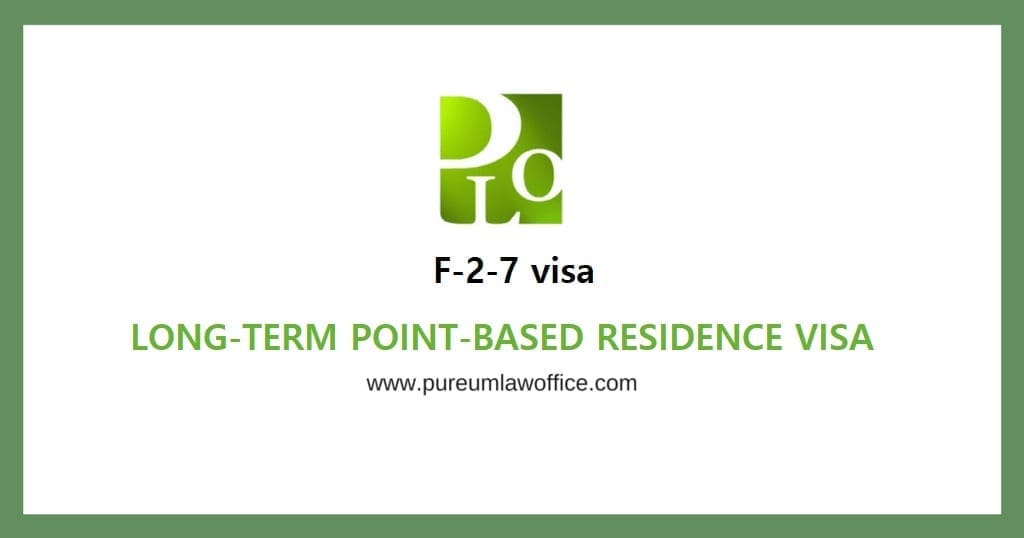Today we are entering another mini-series of articles by Pureum Law Office. This time we will discuss two sub-types of F-2 visa: F-2-7 and F-2-99. First, we are going to shed some light on the F-2-7 visa, also known as the long-term residency point-based visa or simply point-based visa (one of them), and next time we will talk about the F-2-99 (‘others’) visa and in what ways it might be easier to get than the F-2-7.
What is so attractive about F-2 visa, compared to many others?
First of all, it is a long-term residency visa, which basically makes you a resident of Korea, not depending on any sponsor, be that your employer or spouse, which, in turn, means that you can change your workplace freely any time you want.
Second of all, it is easier to get than the F-5 visa, while providing about the same amount of freedom. Third of all, you can engage in a wide variety of activities, including establishing your own business without the minimum requirement of how much you are supposed to invest. Lastly (only in case of F-2-7), 3 years later you will be able to apply for permanent residency visa (F-5).
What are the requirements for the F-2-7 visa? As its name suggests, there is a point system that Immigration officials apply to your application to determine whether you can be granted with this sojourn status or not. Before counting the points, we should first consider two prerequisites for this visa: your current visa type and the period of stay in Korea. Thus, you have to stay for at least 1 year on one of the following visas before applying for F-2-7: E-1~E-7, D-2, D-5~D-10.
Now, let’s talk about the points. The points are calculated by an Immigration Officer on the spot when you submit your documents. Naturally, you would want to check the points before you start the preparation process, which is why for your reference we translated the latest version of the table used by the Immigration officials, you can find it below.

Age:

Education:

Korean language:

Annual income:

The income level is measured for the previous year, all in KRW (mil. = million). There are also additional points that can be given for completion of the KIIP, volunteering, etc. F-2-7 visa is considered to be one of the harder visas to get, which proves to be very true, as in many cases even a 1-point deficiency can lead to being rejected by an Immigration officer.
Therefore, we often recommend our clients to complete the KIIP program as it is one of the easiest ways to boost your points and chances to get the long-term residency visa (and some others).
If you have additional questions, you may contact our office by e-mail or phone number given in the Contacts section. Our next article will be about the F-2-99 visa, which is also a residency visa with a slightly different approach to evaluation. Stay tuned!




